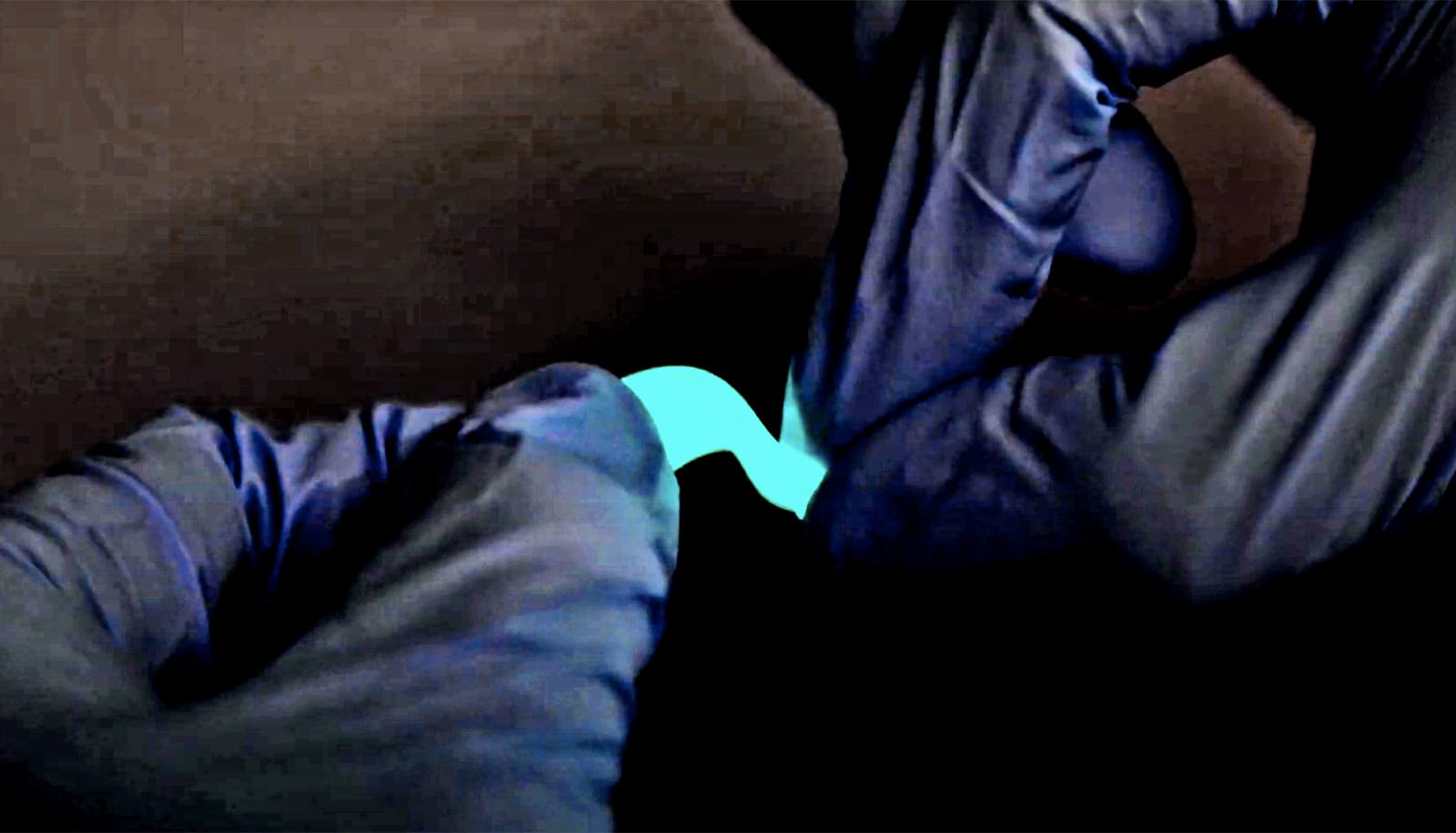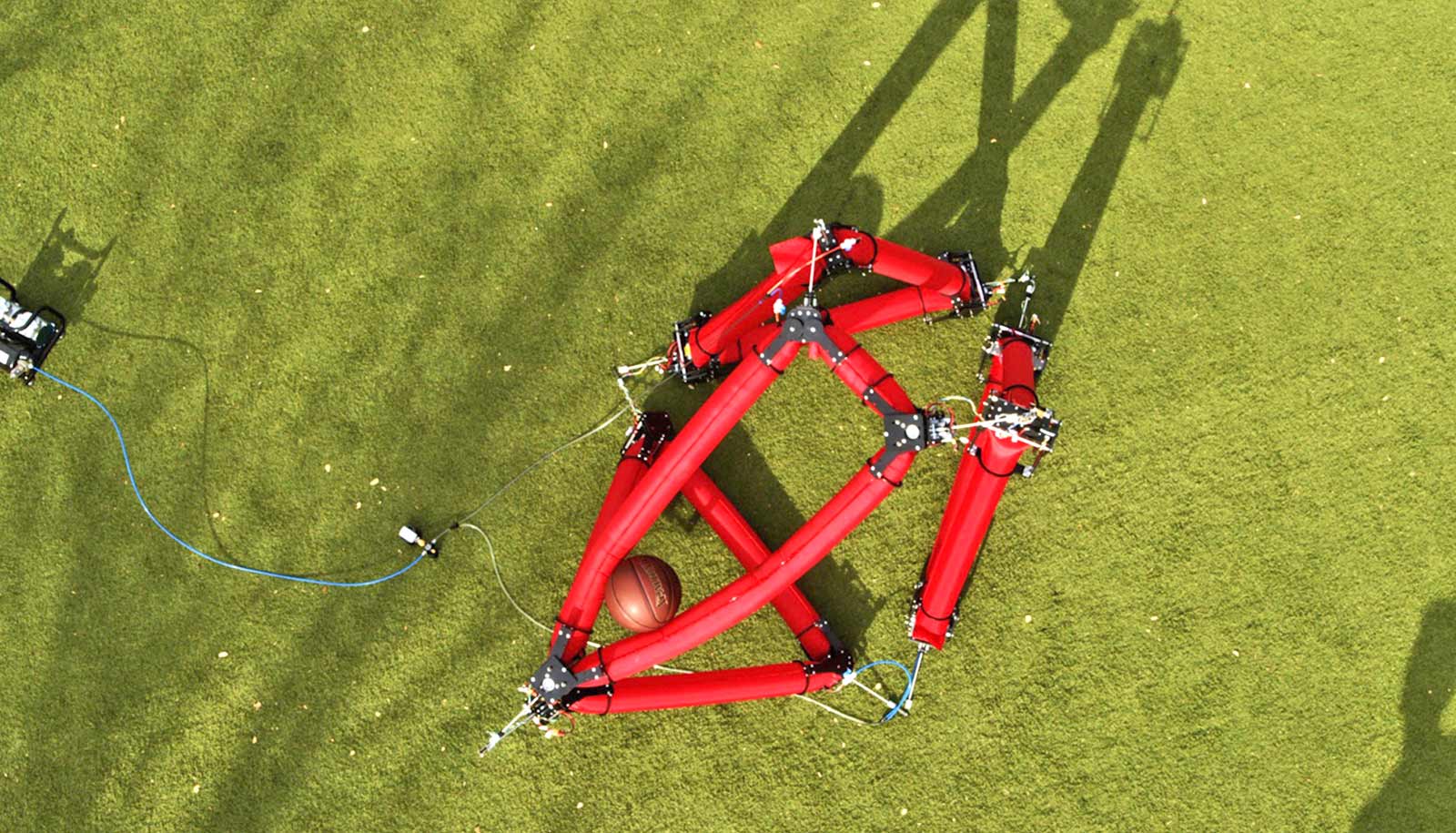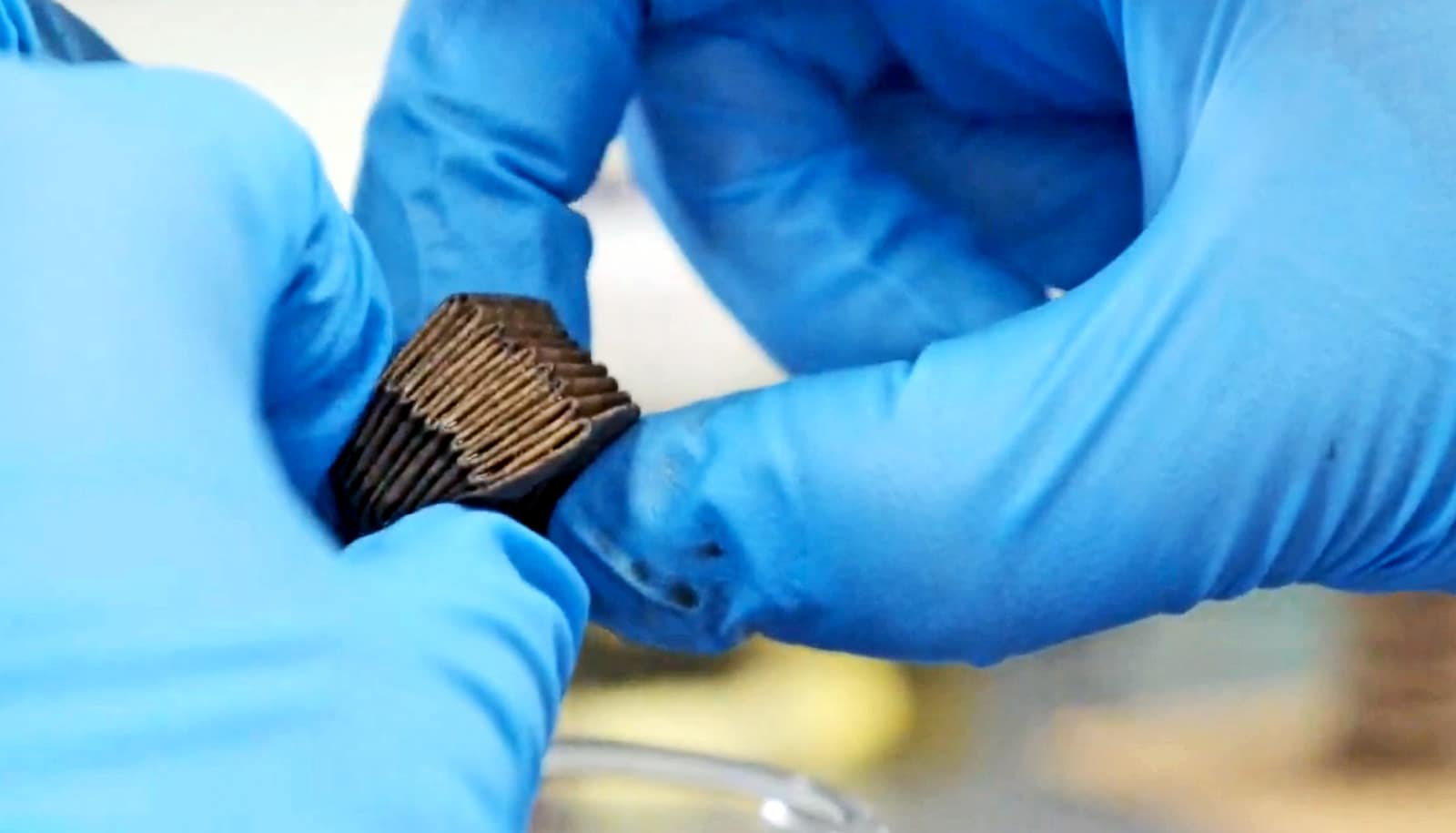A new stretchy material called HELIOS could pave the way for flexible digital screens that heal cracks or light-emitting robots that locate survivors in dark, dangerous environments, researchers report.
In light-emitting capacitor devices, the material enables highly visible illumination at much lower voltages than other similar materials. The HELIOS (which stands for Healable, Low-field Illuminating Optoelectronic Stretchable) material is also resilient to damage due to its self-healing properties.
“Conventional stretchable optoelectronic materials require high voltage and high frequencies to achieve visible brightness, which limits portability and operating lifetimes. Such materials are also difficult to apply safely and quietly on human-machine interfaces,” says Benjamin Tee, assistant professor in the National University of Singapore’s Institute for Health Innovation & Technology and NUS Materials Science and Engineering.
To overcome these challenges, the researchers began studying and experimenting with possible solutions in 2018, and eventually developed HELIOS after a year.
In order to lower the electronic operating conditions of stretchable optoelectronic materials, the researchers developed a material with very high dielectric permittivity and self-healing properties. The material is a transparent, elastic rubber sheet made up of a unique blend of fluoroelastomer and surfactant. The high dielectric permittivity enables it to store more electronic charges at lower voltages, enabling a higher brightness in a light-emitting capacitor device.
Unlike existing stretchable light-emitting capacitors, HELIOS-enabled devices can turn on at voltages that are four times lower, and achieve illumination that is more than 20 times brighter.
It also achieved the brightest illumination that stretchable light-emitting capacitors have attained to date and comparable to the brightness of mobile phone screens. Due to the low power consumption, HELIOS can achieve a longer operating lifetime, is safe for use in human-machine interfaces, and can get power wirelessly to improve portability.
HELIOS is also resistant to tears and punctures. The reversible bonds between the molecules of the material can be broken and reformed, thereby allowing the material to self-heal under ambient environmental conditions.
“Light is an essential mode of communication between humans and machines. As humans become increasingly dependent on machines and robots, there is huge value in using HELIOS to create ‘invincible’ light-emitting devices or displays that are not only durable but also energy-efficient,” says Tee.
“This could generate long-term cost savings for manufacturers and consumers, reduce electronic waste and energy consumption, and, in turn, enable advanced display technologies to become both wallet and environmentally friendly.”
For example, HELIOS could be used to fabricate long-lasting wireless displays that are damage-proof.
It could also function as an illuminating electronic skin for autonomous soft robots to be deployed for smart indoor farming, space missions, or disaster zones. Having a low-power, self-repairing illuminating skin will provide safety lighting for the robot to maneuver in the dark while remaining operational for prolonged periods.
The researchers have filed for a patent for the new material. They’re looking to scale up the technology for specialty packaging, safety lights, wearable devices, and automotive and robotics applications.
The research appears in Nature Materials.
Source: National University of Singapore



